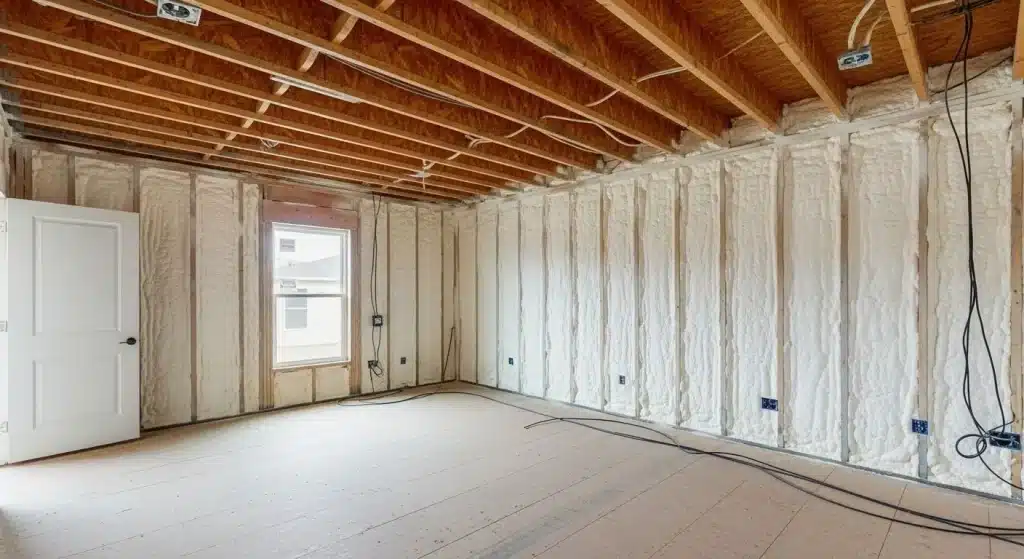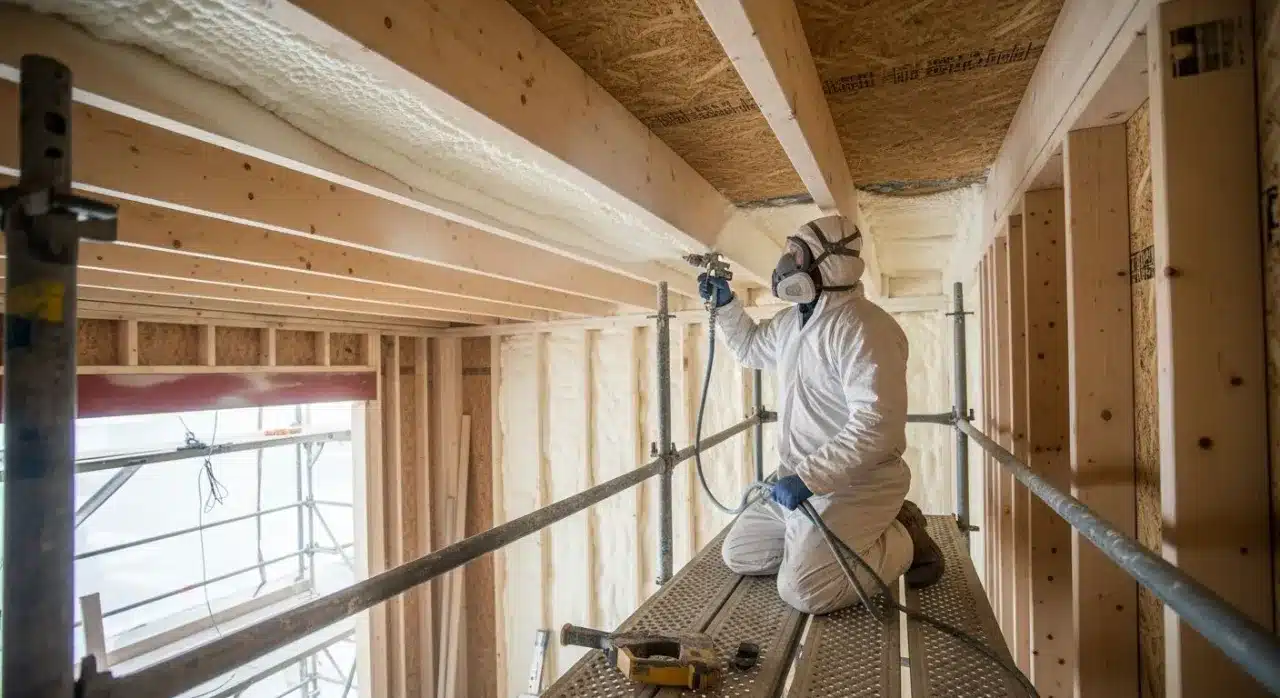Spray foam insulation offers R-values from 3.5 to 7 per inch, depending on the type used. Open-cell spray foam typically hits around 3.5 to 3.8 R-value per inch, while closed-cell versions reach 6 to 7 R-value per inch. These numbers measure how well the material resists heat flow, with higher values meaning better insulation performance.
This article breaks down the details on R-values for spray foam, including types, comparisons, and practical factors, drawing from years of hands-on work installing spray foam in various structures to provide clear, reliable guidance on how this insulation works in real homes based on direct observation of performance in different setups.
Understanding R-Value Basics
R-value stands for thermal resistance, a standard measure for insulation materials. It shows how much the material slows down heat transfer. For every inch of thickness, a higher R-value blocks more heat, which helps keep indoor temperatures steady.
In practice, spray foam expands to fill gaps and create an air-tight seal. This setup not only provides the R-value but also reduces air leaks, which can cut energy use by up to 30% in homes, according to data from the U.S. Department of Energy. That seal makes the overall insulation effect stronger than just the raw R-value number.
Types of Spray Foam and Their R-Values
Two main types exist: open-cell and closed-cell spray foam. Each serves different needs based on density and application.
Open-cell foam uses air pockets to insulate, making it lighter and more flexible. It absorbs sound well and costs less, but moisture can affect it over time. Closed-cell foam, denser with gas-filled cells, offers higher R-value and acts as a vapor barrier. It resists water and adds structural strength to walls or roofs.
Here’s a quick comparison table of R-values for common insulation types, including spray foam:
| Insulation Type | R-Value per Inch | Best For |
|---|---|---|
| Open-Cell Spray Foam | 3.5 – 3.8 | Attics, interior walls |
| Closed-Cell Spray Foam | 6.0 – 7.0 | Exterior walls, roofs |
| Fiberglass Batts | 2.9 – 3.8 | General walls |
| Cellulose Loose-Fill | 3.1 – 3.8 | Attics, floors |
This table highlights how spray foam often outperforms traditional options in R-value efficiency.
Bonus Tip: In hot climates like Las Vegas, closed-cell foam holds up better against high temperatures and low humidity, preventing sagging or settling that can happen with looser materials.
How Climate Affects R-Value Choices
Local weather plays a big role in picking the right insulation. In desert areas such as southern Nevada, summers hit over 100 degrees Fahrenheit, pushing air conditioning to work hard. Spray foam’s high R-value helps maintain cool interiors without constant energy drain.
Winters stay mild, but nights drop cold, so insulation must handle temperature swings. Closed-cell spray foam excels here because its R-value stays consistent even under compression or moisture changes. A study by the Oak Ridge National Laboratory notes that spray foam reduces cooling costs by 15-20% in hot-dry regions compared to standard fiberglass.
Open-cell might suit spaces needing sound control, like home theaters, but for outer walls exposed to sun, closed-cell provides that extra barrier against heat gain.
Market Facts on Spray Foam Use
Beyond practical benefits, spray foam’s popularity is reflected in growing market trends. The spray foam market grows steadily as builders seek energy-efficient options. In 2022, the U.S. insulation market reached $14.5 billion, with spray foam taking a larger share due to its superior R-values, per a report from Grand View Research. This trend shows more homes adopting it for better performance.
Another fact: Homes with spray foam insulation see average energy savings of 10-50%, depending on the setup, as reported by the Spray Polyurethane Foam Alliance. These savings make it a smart pick in areas with high utility bills.
Bonus Tip: Check local building codes in Nevada, as they often require minimum R-30 for attics in new constructions to meet energy standards tailored to the hot climate.
Things to Consider Before Making a Decision
Several factors influence the choice of spray foam insulation, starting with the space’s purpose. Walls, roofs, or floors each demand different thicknesses to hit target R-values.
Budget matters too, since closed-cell costs more upfront but pays back through lower bills. It’s also important to assess existing structure integrity, as spray foam adheres permanently and might need professional removal later.
Health and safety rank high, so ensure installers use low-VOC products to avoid indoor air issues. Finally, look at long-term durability; in dusty desert environments, sealed foam resists buildup better than blown-in types.
Weigh energy audits to calculate exact R-value needs based on your home’s size and layout.

Common Questions
How does spray foam thickness affect R-value?
R-value increases directly with thickness. For example, two inches of closed-cell spray foam provide roughly R-12 to R-14 in total insulation performance.
How does spray foam compare to other types of insulation?
Spray foam outperforms traditional materials because it expands to seal gaps and voids. This improves the effective R-value of a wall or attic beyond just the per-inch rating.
Bonus Tip: Test air leakage in your home first; fixing leaks with spray foam can double the insulation benefit without adding extra material.
Frequently Asked Questions
Does spray foam R-value decrease over time?
No, quality spray foam maintains its R-value for decades if installed correctly. Unlike some materials that settle, spray foam stays in place and resists degradation from pests or weather.
Is open-cell or closed-cell better for R-value?
Closed-cell provides higher R-value and moisture resistance, ideal for humid or variable climates. Open-cell works for dry interiors where cost savings matter more.
How much spray foam do I need for my home?
Calculate based on square footage and desired total R-value. For a typical Las Vegas attic aiming for R-49, plan 7-8 inches of closed-cell foam to account for local code requirements.
Can spray foam be used in older homes?
Yes, it retrofits well into existing cavities, but inspect for asbestos or lead first. Professional application ensures even coverage without over-expansion.
What’s the environmental impact of spray foam?
Modern formulas use blowing agents with low global warming potential. It cuts energy use, reducing carbon emissions over the home’s life, though recycling poses challenges at end-of-life.
Key Takeaways
Spray foam insulation delivers strong R-values of 3.5 to 7 per inch, with closed-cell leading for efficiency. It seals air leaks and suits hot climates like Las Vegas by stabilizing temperatures. Consider climate, budget, and structure before choosing. Evaluate your home’s specific needs and long-term energy goals to pick the best fit.
Ready to Insulate Your Space
For expert advice on spray foam options, contact Supreme Spray Foam LV at (702) 904-9895 or email [email protected]. Discuss your project details to get tailored recommendations that match your setup and local conditions. This step ensures effective installation without guesswork.
Sources
- U.S. Department of Energy – Government resource on insulation types, R-values, and energy savings in homes.
- Oak Ridge National Laboratory – Research on building materials performance, including spray foam in various climates.
- Grand View Research – Market analysis report detailing U.S. insulation industry growth and trends.



